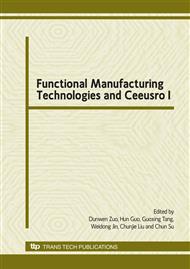p.468
p.472
p.477
p.481
p.485
p.490
p.494
p.499
p.503
An Empirical Analysis on Regional Manufacturing Integration of the Yangtze River Delta Area
Abstract:
Based on the industrial advantages and the development of modern manufacturing industry, industrial isomorphism and manufacturing capacities which affect the manufacturing integration of the Yangtze River Delta Area has been analyzed. The major findings are that there exists structural isomorphism only in macro-industry areas, but their micro structures are different. There are distinct leading manufacturing industries respectively in Suzhou, Wuxi and Changzhou. Finally, a conclusion can be drawn that we should adopt dislocation strategy to promote the three cities’ manufacturing integration, and shape a model of Suzhou-electronic information, Wuxi-microelectronic industry and Changzhou-equipment manufacturing industry.
Info:
Periodical:
Pages:
485-489
Citation:
Online since:
January 2010
Authors:
Keywords:
Price:
Сopyright:
© 2010 Trans Tech Publications Ltd. All Rights Reserved
Share:
Citation:


